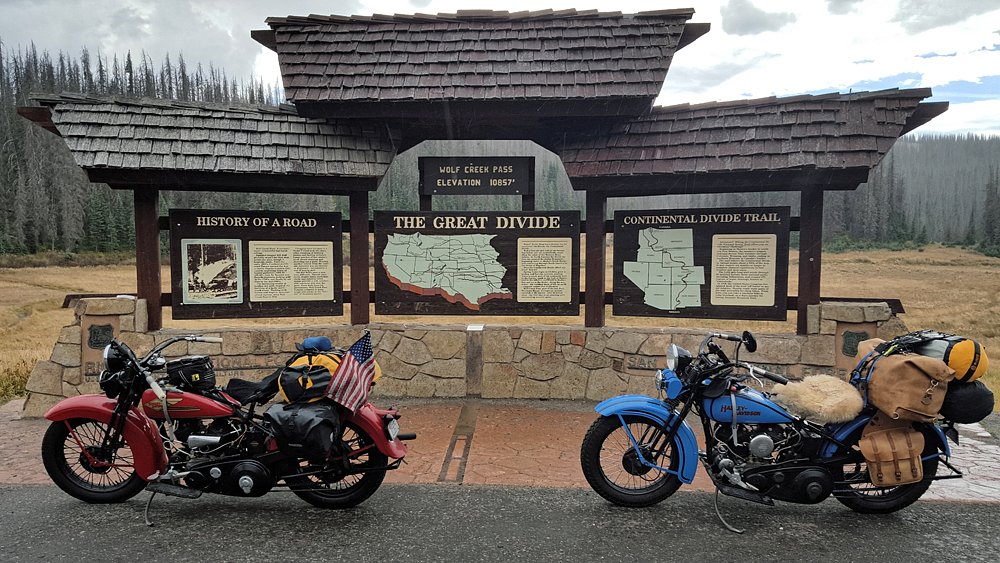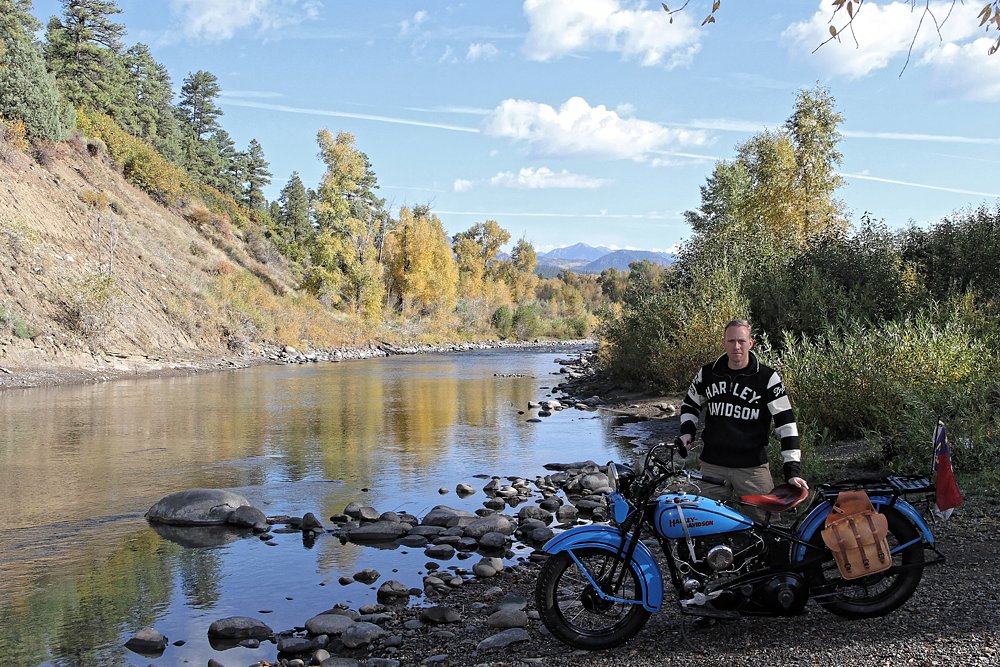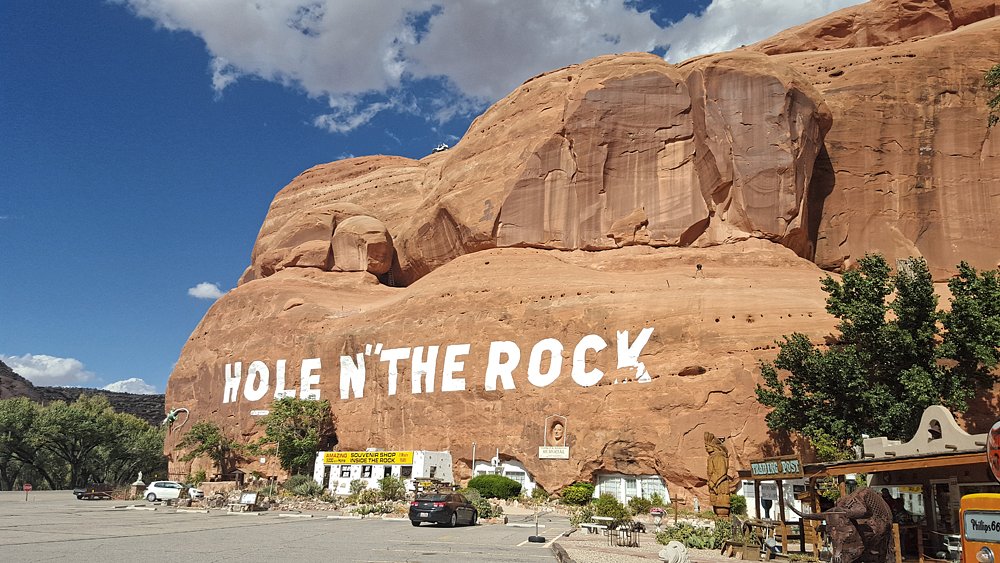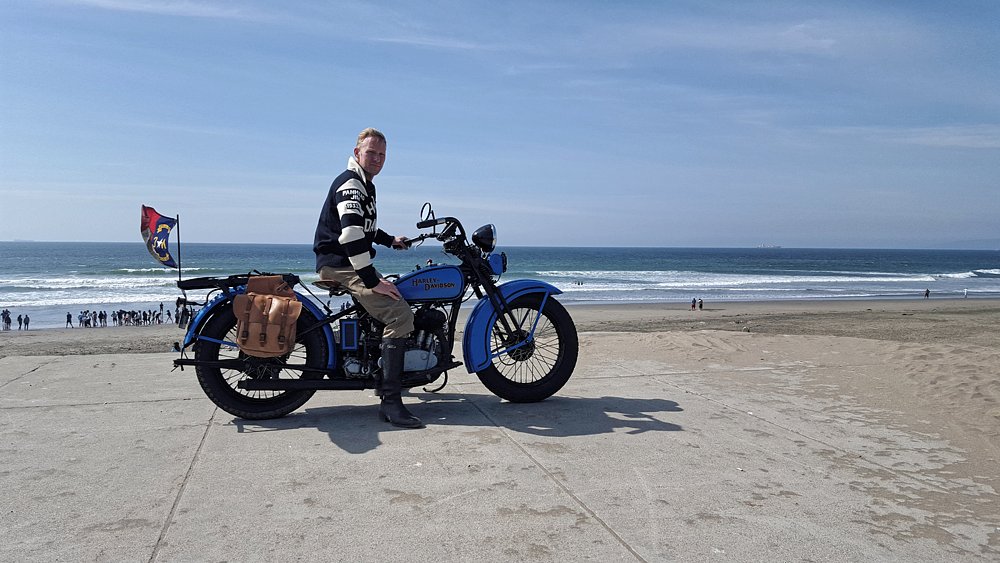As we rode out on the second half of the journey, our sights were set on the one obstacle that could result in the complete failure of our trip, the Rocky Mountains.
Our passage through the mountains back East had been relatively trivial, taking routes that kept us well under 5,000 feet in elevation. Now, we were about to ride our 80-year-old bikes to points higher than 11,000 feet. Could they handle sustained uphill operation at such high altitudes?



We finally got an authentic taste of the Old West after crossing into Colorado and touring an adobe structure known as “Bent’s Old Fort.” Painstakingly restored by the National Parks Service, Bent’s Old Fort really gave a good look into what life was like on the frontier nearly 200 years ago. From there, we continued along the old Santa Fe Trail, reaching the base of the Rocky Mountains a day later. For our crossing, we chose Wolf Creek Pass, since it was the lowest route (a mere 10,856 feet) and started snaking our way up the mountain.

Before the introduction of constant velocity carburetors in the early 1970s, changes in elevation necessitated retuning the carburetor to account for changes in air density. This meant that as we rode up the mountain, we had to adjust the fuel mixture by turning in the high speed needle to limit the amount of fuel going into the motor. Failure to do this would have resulted in an overly rich mixture which would have fouled our sparkplugs and stalled the motors. Luckily, these adjustments can be made while the bike is in motion, although it can be a little dicey riding up a mountain, steering with one hand and leaning over to adjust the carburetor with the other. To increase the difficulty level, it also began to rain as we started our ascent.





We joined up with Route 50 after leaving Moab and continued west to Nevada. Life Magazine had famously nicknamed Route 50 through Nevada as the “Loneliest Road in America,” so it sounded like the perfect place to ride two antique bikes that could only make just over 100 miles without needing gas. Nevada had long ago embraced the moniker and provides an Official Route 50 Survival Guide to all travelers of the road. If you get your Survival Guide stamped in at least five of the eight communities along the way, you can also send off for a certificate signed by the governor and a souvenir lapel pin. Needless to say, we accepted the challenge, along with a little extra insurance in the form of a one-gallon gas jug.
Just like wearing rain gear seems to keep bad weather at bay, the addition of the gas jug ensured that we were able to cover the distances between gas stations without incident. In the end, it turned out that Route 50 was a beautiful stretch of highway with enough civilization to keep both our gas tanks and bellies full all the way across Nevada.

We reached eastern California with just four days to go before our return flight back to North Carolina, and as we started to climb back into the mountains, we were more than a little worried about the strain on the bikes. The chance of blowing up a motor while chugging up a steep incline was a very real possibility, so we took care not to “blow it” one day from the coast. Our Californian host and guide, Joe, met us on the other side of the mountains and we breathed a collective sigh of relief as we motored down to sea level.

San Francisco was our ultimate goal, and on the nineteenth day of our journey we finally pulled up to the Golden Gate Bridge. Then it was on to the beach to truly complete our coast-to-coast run. All told, we traveled 3,649.5 miles, during which my 1933 VL burned 71 gallons of fuel and dripped 15 quarts of oil along the way. Amazingly, both bikes completed the trip without a single mechanical failure. I attribute that to careful preparation and diligent maintenance along the way.

Most importantly, I realized my goal of building a bike from scratch and successfully riding it across the country. I also proved that you don’t need a new BMW K 1600 GTL to ride from coast to coast. You just need time, determination and a bit of luck.

















